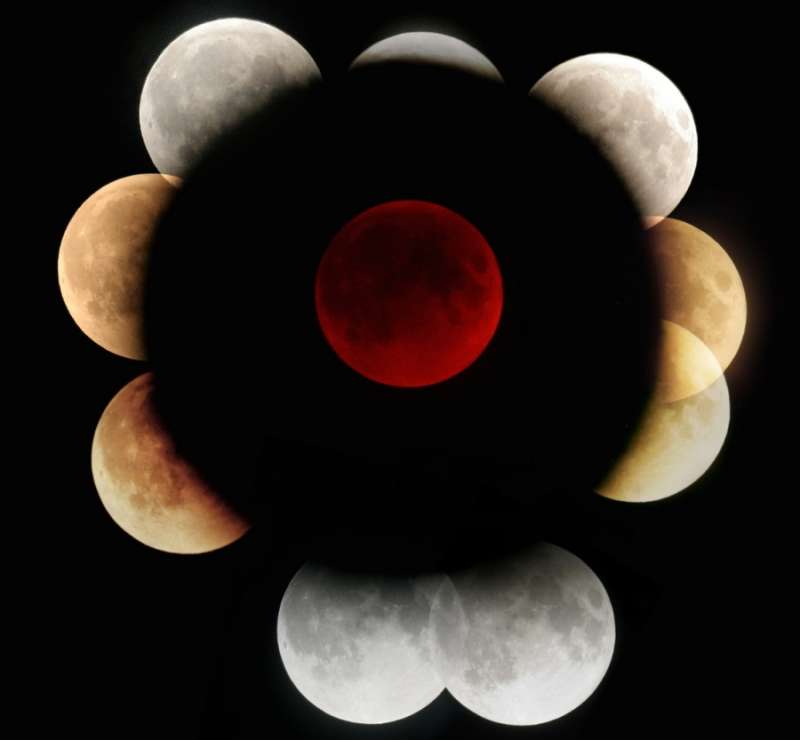Credit & Copyright: Igor Vin'yaminov
Explanation:
The dark, inner shadow of planet Earth is
called
the umbra.
Shaped like a cone extending into space, it has a
circular cross section and is most easily seen
during a
lunar eclipse.
But the complete cross section
is larger than the Moon's angular size in the stages of an eclipse.
Still, this thoughtful composite illustrates the full
extent of the circular shadow by utilizing images from both
partial and total eclipses passing through different parts
of the umbra.
The images span the years 1997 to 2011, diligently
captured with the same optics, from Voronezh, Russia.
Along the bottom and top are stages of the partial lunar
eclipses from
September 2006 and
August 2008 respectively.
In the rightside bottom image, the Moon is entering
the umbra for the total eclipse of September 1997.
At left bottom, the Moon leaves the umbra after totality in
May 2004.
Middle right, center, and left, are stages of the total eclipse of
June 2011, including the central,
deep red total phase.
During today's brief partial lunar eclipse
seen only from the eastern hemisphere,
the Moon will just slightly
graze the umbra's lower edge.
1999 2000 2001 2002 2003 2004 2005 2006 2007 2008 2009 2010 2011 2012 2013 2014 2015 2016 2017 2018 2019 2020 2021 2022 2023 2024 2025 |
Yanvar' Fevral' Mart Aprel' Mai Iyun' Iyul' Avgust Sentyabr' Oktyabr' Noyabr' Dekabr' |
NASA Web Site Statements, Warnings, and Disclaimers
NASA Official: Jay Norris. Specific rights apply.
A service of: LHEA at NASA / GSFC
& Michigan Tech. U.
|
Publikacii s klyuchevymi slovami:
lunar eclipse - shadow - Moon - Luna - lunnoe zatmenie
Publikacii so slovami: lunar eclipse - shadow - Moon - Luna - lunnoe zatmenie | |
Sm. takzhe:
Vse publikacii na tu zhe temu >> | |
